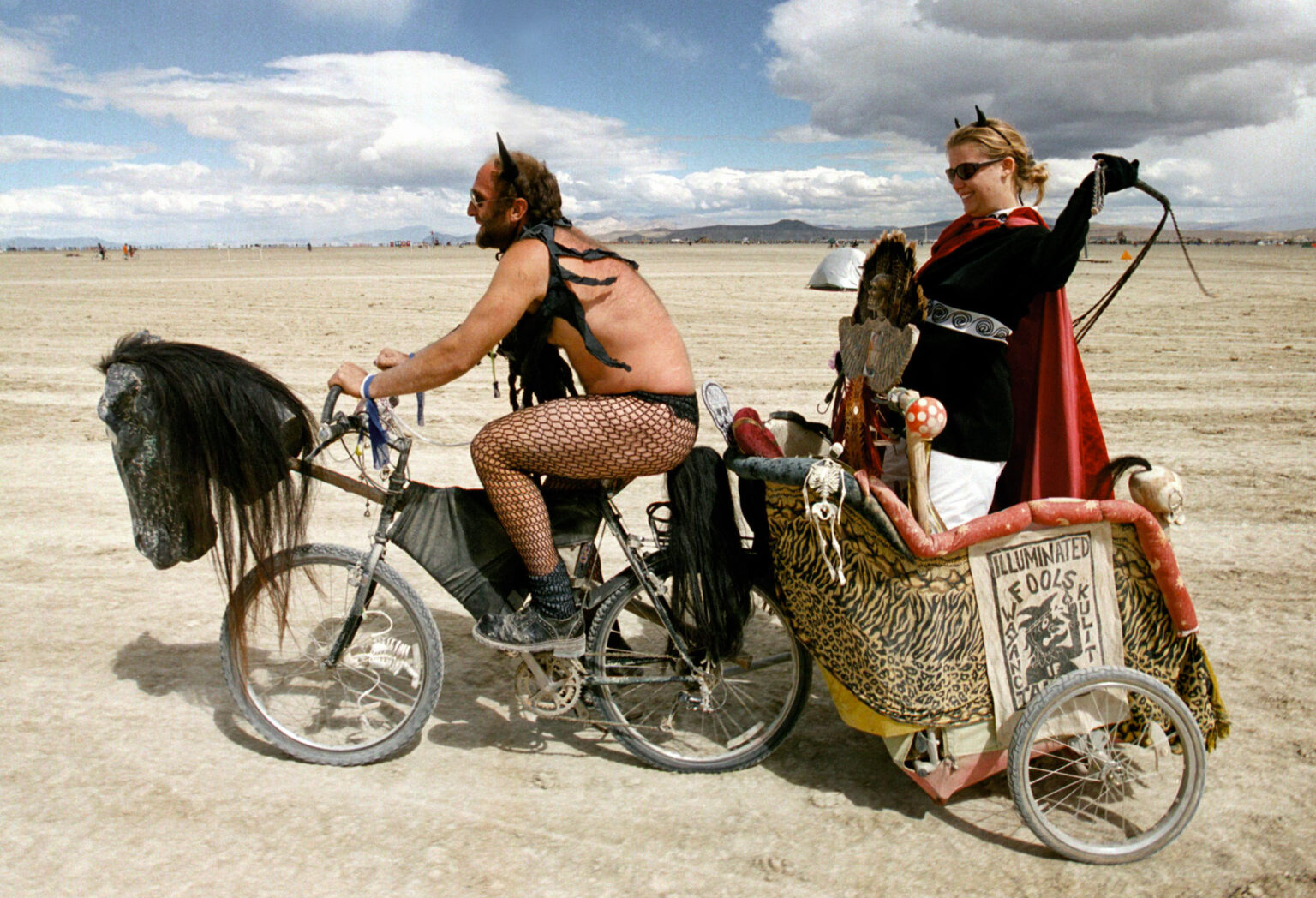Black Rock City – The annual Burning Man arts festival in Nevada’s Black Rock Desert has long held a reputation for radical self-expression and free-spirited attendees. Still, new census data reveals a shifting demographic towards more affluent participants.
According to the 2023 Black Rock City Census, nearly 60% of Burning Man attendees reported earning over $100,000 per year. When combined household incomes are considered, that number jumps to 64%, making six figures or more annually. Thats more than 35% higher than the national average income of $65,470.
The data shows the impact of rising ticket prices and costs related to attending the week-long event, held in a dry lake bed known as the playa. With few amenities in the arid dessert, Burners arrive with RVs, specialized vehicles, and camping supplies towed in just for the event.
In addition to above-average incomes, Burning Man’s 2023 attendees were also more highly educated than the general public. Over a third reported having a graduate or other post-undergraduate degree. That’s more than double the national average of 15% of the overall U.S. population.
Tech Industry Draws Many Burners
With a cap of 80,000 participants, but over 500,000 ticket requests annually, limited space contributes to Burning Man’s exclusivity. Applications for the ticket lottery saw an influx of submissions from New York and Silicon Valley this past year.
Many Burners use time off work to contribute art, theme camps, and volunteer projects to Black Rock City.”
Google co-founders Sergey Brin and Larry Page were notably regular attendees in Burning Man’s early days. Their enthusiasm brought many other tech workers to the dusty desert gathering, once considered a counterculture outlier. With tech money rapidly gentrifying the San Francisco Bay Area, Burning Man seems to have followed suit.
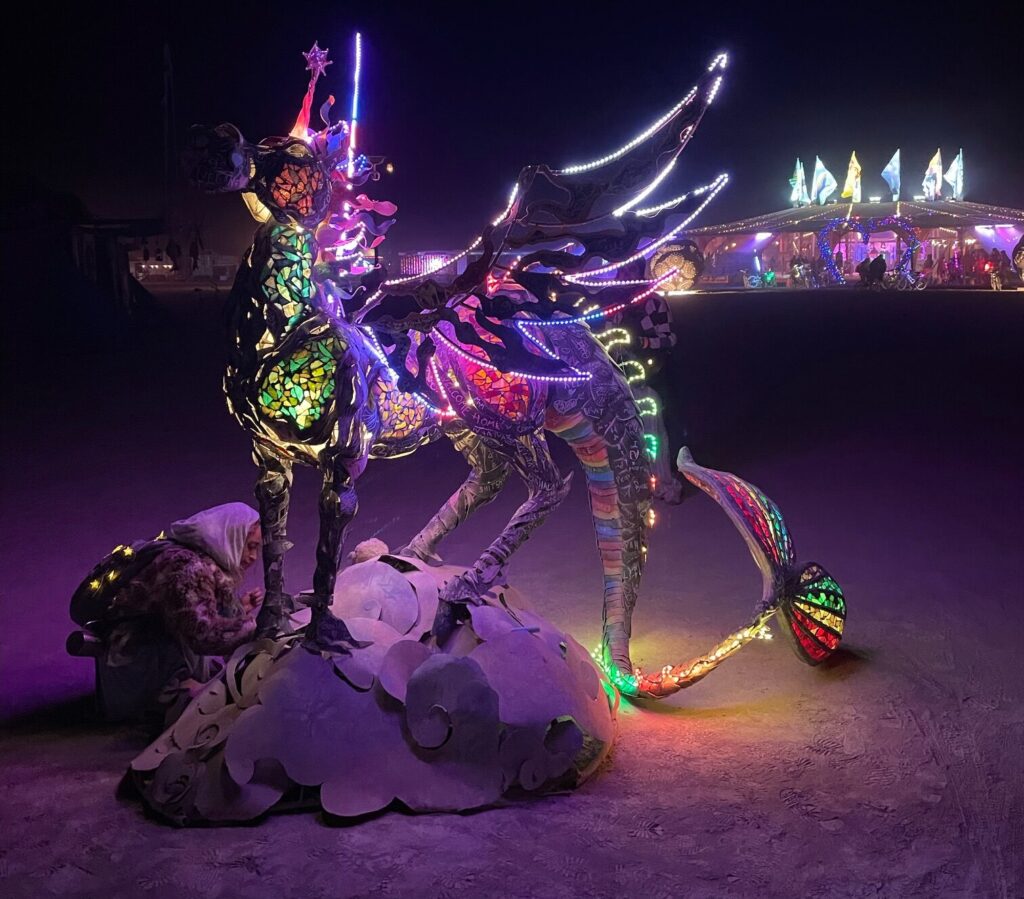
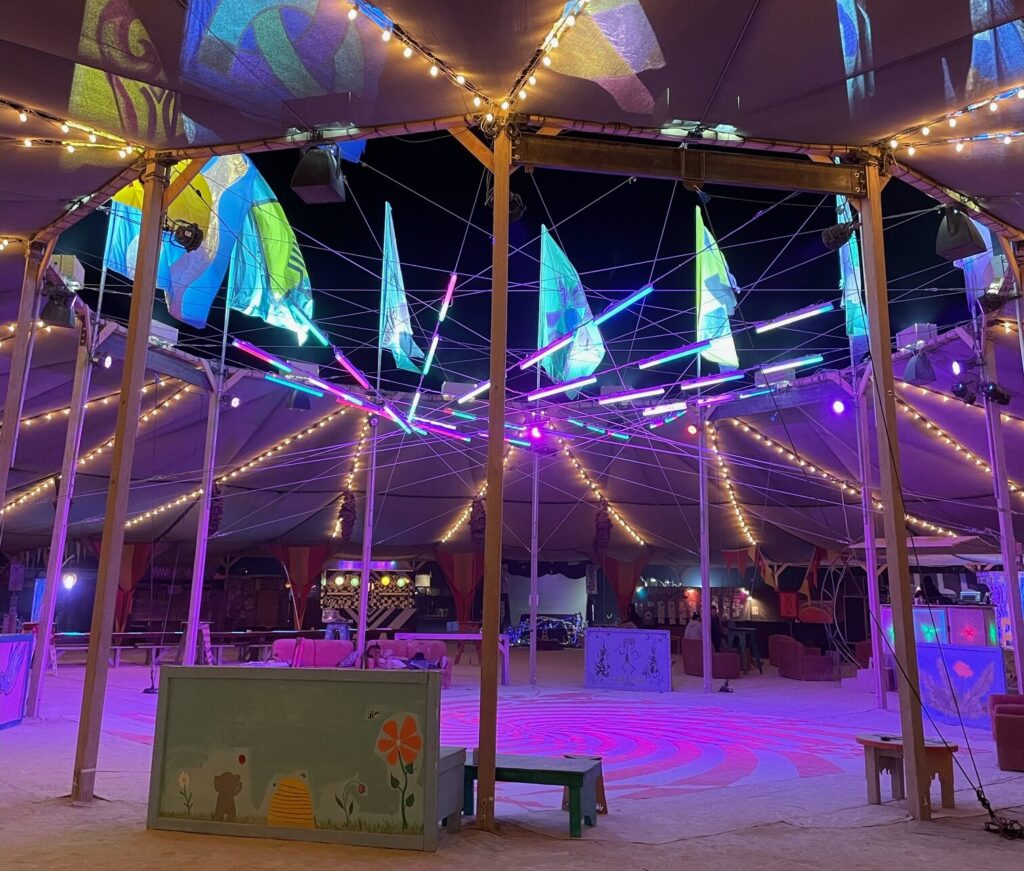
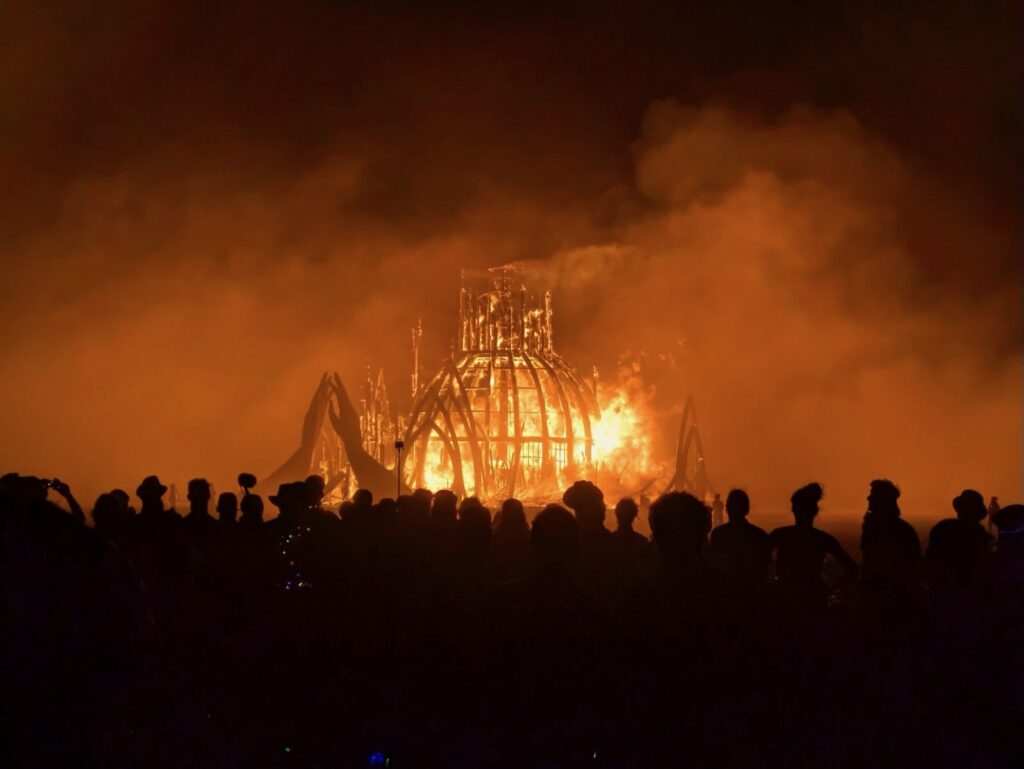
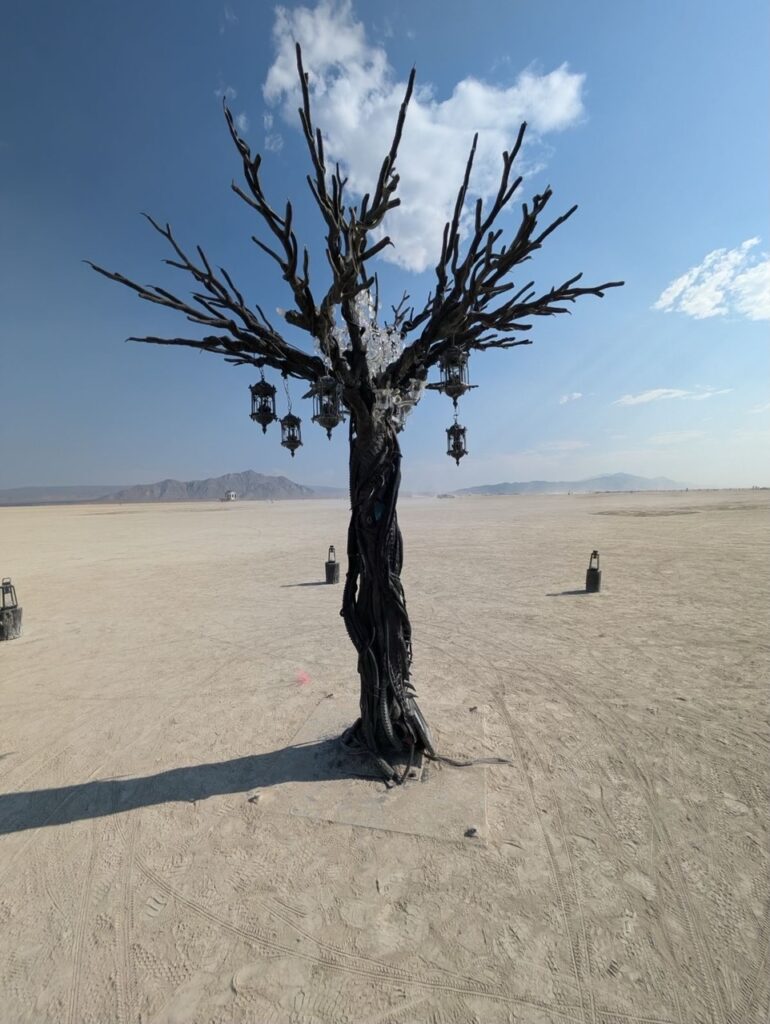
2023 Sees First Female Majority
In a milestone for gender diversity, 2023 marked the first year women outnumbered men at Burning Man, comprising 50.7% of attendees responding to the optional census questionnaire. Previously, men outnumbered women on the playa by as much as a three-to-one ratio — comparable to the gender disparity on dating apps.
“This speaks to the welcoming and safe community that shapes Burning Man’s foundation each year,” said Goodell. “Self-expression has no gender here.”
Burners Continue Questioning the Census
While demographic data shows a shift towards affluent tech workers, many longtime Burners question the accuracy of the annual census. Critics claim the digital survey fails to capture feedback from those without reliable internet access. They also argue that requiring Burners to submit personal details contradicts the event’s culture of anonymity and inclusion.
“The Organization wants to showcase Burning Man as mainstream now,” said one Burner skeptical of census results. “But the heart of this community will always lie with those seeking pure freedom to create art and connect without judgment.”
As Black Rock City evolves from its scrappy origins over 30 years ago, balancing accessibility with affordability poses an ongoing challenge to organizers. For now, wealthy techies and struggling artists still come together to bask in the glow of massive art installations scattered across the desert. Money seems secondary to creativity, as costumes emerge and colorful bikes zoom across the playa.
The Burning Man Project plans to adjust its 2024 ticket structure to improve access for lower-income Burners, while still funding the enormous resources required to construct Black Rock City each year.
Related: Burning Man Hasn’t Sold Out For The First Time In 13 Years


